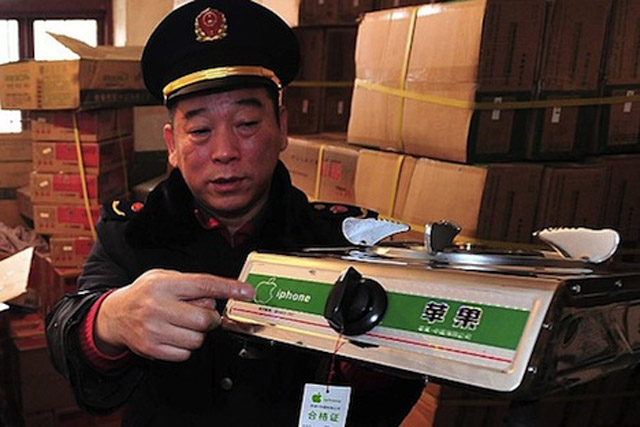Get the weekly SPARTANAT newsletter.
Your bonus: the free E-Book from SPARTANAT.

REVIEW: Outdoor stoves overview 1 - Hobos
This article provides an overview of portable camping and outdoor stoves for life in the field. It discusses different types of stoves, including improvised hobo stoves, solid fuel stoves, gas stoves, multi-fuel burners, and alcohol stoves. The advantages and disadvantages of these stoves are also explored.
Without food, there is no fight. Everyone knows this wisdom, especially when it's getting late, a warm meal or a hot coffee in the morning is worth its weight in gold. Reason enough to deal with portable camping and outdoor stoves for life in the field.
Barthel's article aims to provide a basic overview, as many new systems/hybrids have been introduced in recent years, making it difficult to cover everything. By the way, the iPhone gas stove (a Chinese fake, pictured above) did not prevail.
In general, there are 5 types of stoves:
- (Improvised) stoves in the style of a hobo stove
- Solid fuel stoves (Esbit)
- Gas stoves
- Multi-fuel burners
- Alcohol stoves
As a "small" special case, the petroleum stoves from Sweden/Finland/Norway can be counted, which are very similar in structure to the multi-fuel burners.
Regarding (improvised) hobo stoves:
These "stoves" have the advantage that they can burn basically all solid fuels including wood, fabric scraps, animal dung, etc., and with some small tips, liquid fuels can also be used.

The foldable hobo stove for on-the-go is an extremely useful tool for life in the field. Here is a high-end version from Bushcraft Essentials (https://www.bushcraft-essentials.com).
They typically consist of a kind of "can" with holes at the bottom for air intake and a pot/pan placed on top. The fuel is burned in the can, similar to a small campfire. This type of stove is available as a ready-made folding structure, or otherwise manufactured, but it can also be easily made from an old tin can by simply making a few larger holes at the bottom (possibly large enough to insert small fuel) and cutting some "battlement" or holes at the top for ventilation. Additionally, this type of "stove" can be used at nearly all temperatures.
Gasoline or other liquid fuels are best burned by filling the can with some sand (the bottom holes must be correspondingly small) and soaking it with fuel, EXTREMELY!!! careful when lighting, it's best to make a very long match substitute.
However, a disadvantage is that the heat supply is hardly controllable, the fuel must be cut/broken accordingly small to fit into the can; also, depending on the fuel, there is a significant smoke and soot development, so it should not be used in a tent or in enclosed spaces. Ultimately, it is actually just a very small campfire/cooking fire, so the remains, if not to be reused, must be disposed of as washing lye or filter charcoal accordingly.
It is quickly improvised and much easier to control than an open campfire, making it a good choice when nothing else is available. The advantage is that you can use it where you can't make a campfire.
However, this type of stove is very cheap in the price range of 0-50€ and there are almost no additional operating costs, besides the fuel being easy to obtain and widely available worldwide.
To be continued

You can also do it like this if you like to tinker: improvised hobo stove made from an IKEA cutlery basket. Here is the video.
SPARTANAT is the online magazine for Military News, Tactical Life, Gear & Reviews.
Send us your news: [email protected]
Ad
similar
Get the weekly SPARTANAT newsletter.
Your bonus: the free E-Book from SPARTANAT.


